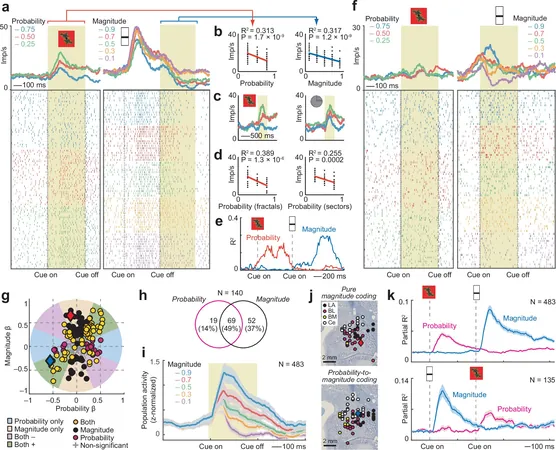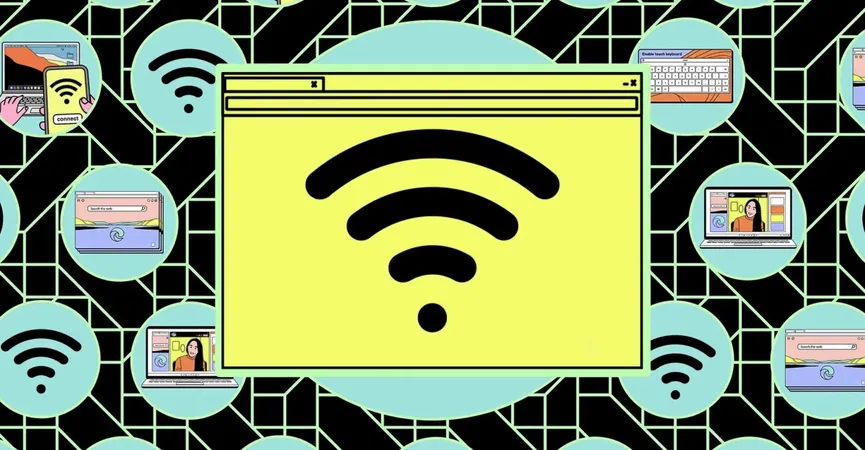
Unlocking the Secrets of the Brain: How Neurons Navigate Reward, Risk, and Decision-Making
2025-04-02
Author: John Tan
In a groundbreaking study that could change our understanding of decision-making processes, scientists have delved deep into the intricate workings of the brain's amygdala, unveiling how individual neurons process vital information about rewards and risks. The research, spearheaded by Raymundo Báez-Mendoza from the German Primate Center (DPZ) and Fabian Grabenhorst from the University of Oxford, reveals that these neurons play a crucial role in dynamically interpreting probabilities and magnitudes of rewards, ultimately guiding our decisions.
Published in the prestigious Nature Communications, this research sheds light on the neural mechanisms underlying decision-making, offering potential implications for mental health issues like anxiety and depression. "The amygdala is a pivotal hub for emotions and choices," notes Báez-Mendoza, who leads the Junior Research Group in Social Neurobiology at DPZ. "Our aim was to identify how specific neurons in the primate brain extract and assess information regarding the probability and size of rewards, translating this data into risk evaluations that inform decision-making processes."
The Monkey Trials: Learning Through Choices
To uncover these insights, two rhesus monkeys were subjected to an experimental setup designed to assess neural activity during decision-making. The primates watched visual cues on a screen that signaled the probability and magnitude of rewards, which were dispensed as fruit juice through a tube. Each monkey participated in behavioral tasks where they made choices between two options: a "safe" choice with a guaranteed reward and a "risky" option that offered variable odds. This behavioral design allowed researchers to observe the monkeys' decision-making strategies and their ability to optimize rewards based on the information provided.
Neurons and Their Understanding of Probabilities
The team's observations revealed that numerous amygdala neurons can represent reward probabilities in an abstract manner, independent of visual stimuli. Notably, certain neurons focused solely on evaluating probabilities, while others considered both the odds and the rewards' size. Furthermore, the researchers discovered a sequential processing pattern where amygdala neurons first responded to probabilities, followed by responses to reward magnitudes. This stepwise evaluation allows the brain to flexibly assimilate various reward components, creating a comprehensive understanding of potential outcomes.
Assessing Uncertainty and Risk
Perhaps most intriguingly, the study also illuminated how specific amygdala neurons assess the risk associated with rewards. Risk, in this context, refers to the unpredictability of reward magnitudes. These neurons adeptly combine information about both probabilities and magnitudes to gauge risk, an essential capability for making informed choices in uncertain scenarios. "Our findings reveal that the amygdala's neurons not only process reward probability and magnitude but also the uncertainty tied to those rewards," Báez-Mendoza explains. "This advances our comprehension of the brain's approach to complex economic decisions where value and risk coexist."
In a world where choices abound and uncertainty is an ever-present factor, this research challenges us to reconsider how we approach decision-making. Grabenhorst aptly points out, “These specialized probability and risk cells may shape our propensity to pursue high-value yet unlikely goals." As we unravel the complexities of our neural circuitry, this study stands as a reminder of the profound interplay between emotion, cognition, and behavior—not just for primates, but for all decision-makers navigating the unpredictable landscape of life.


 Brasil (PT)
Brasil (PT)
 Canada (EN)
Canada (EN)
 Chile (ES)
Chile (ES)
 Česko (CS)
Česko (CS)
 대한민국 (KO)
대한민국 (KO)
 España (ES)
España (ES)
 France (FR)
France (FR)
 Hong Kong (EN)
Hong Kong (EN)
 Italia (IT)
Italia (IT)
 日本 (JA)
日本 (JA)
 Magyarország (HU)
Magyarország (HU)
 Norge (NO)
Norge (NO)
 Polska (PL)
Polska (PL)
 Schweiz (DE)
Schweiz (DE)
 Singapore (EN)
Singapore (EN)
 Sverige (SV)
Sverige (SV)
 Suomi (FI)
Suomi (FI)
 Türkiye (TR)
Türkiye (TR)
 الإمارات العربية المتحدة (AR)
الإمارات العربية المتحدة (AR)